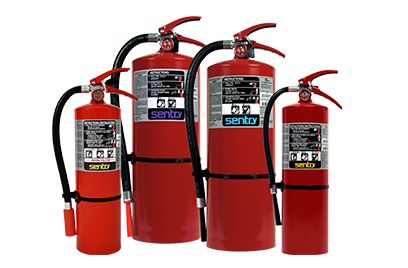Fire extinguishers—you’ve seen them around but how much do you really know about them? These red cylinders can be lifesavers when an emergency strikes.
Let’s go over some key facts to make you a fire extinguisher expert.
From Medieval Squirts to Modern Science
People have tried to fight fires with handheld devices for centuries. Back in medieval times, they used a simple “squirt” that pumped out about a liter of water. Not bad for way back when!
Jumping ahead to 1723, a British chemist invented something more advanced. His fire extinguisher combined gunpowder and chemicals. When triggered, it shot suppressant liquid onto flames. Messy, but it worked!
It took until the 1800s before the portable extinguishers we know today were created. They used pressurized water, soda solutions, and other liquids to put out fires. Refillable models like we still use came along in 1881. Science for the win!
That Classic Cylinder Shape and Bright Red Color
Take a look at a fire extinguisher. It’s that classic cylindrical shape for a reason—to hold pressurized agents. And why so red? Fire safety codes say they need high visibility. Red screams “Grab me in an emergency!”
Which Type Should You Use?
Not all extinguishers work on all fires. You’ve got options:
- Water—Good for wood, paper, fabric. Cools and soaks.
- Dry Chemical—Your best bet for grease, gasoline, electronics. Powder disrupts the fire.
- Carbon Dioxide—CO2 gas smothers flames but don’t use it on wood or paper fires.
- Wet Chemical—Designed for kitchen cooking oils and grease.
- Clean Agent—No residue, perfect for electronics and devices.
Anatomy of an Extinguisher
While designs vary, most have these key components:
- Cylinder—Holds the extinguishing agents, often steel but sometimes aluminum or plastic.
- Valve Assembly—Triggers release of agents through the nozzle when you pull the lever.
- Siphon Tube—Sucks up the extinguishing chemicals from the bottom of the cylinder.
- Propellant—Compressed gas cartridge that forces out the fire-suppressing agent.
- Gauge—Tells you if the extinguisher is pressurized and ready. Recharge if needed!
- Hose—Directs the discharge from the valve to the nozzle.
Using It Right Can Save Lives
Don’t just grab an extinguisher and start spraying wildly! Follow the PASS method:
Pull the pin. This unlocks the handle.
Aim low at the base of the fire.
Squeeze the handle to discharge the agent.
Sweep side to side at the flames.
Stand back 6-10 feet for safety. If it’s not knocking down the fire, get out and call 911.
Why Extinguishers Are So Essential
Keep extinguishers around home and work. Here’s why they’re vital:
- Stop fires before they spread into monster blazes.
- Allow quick response while waiting for firefighters.
- Prevent smoke inhalation and burn injuries.
- Protect property from unnecessary damage.
- Avoid business disruptions from extensive fire damage.
- Meet legal and insurance requirements for fire safety.
Final Thoughts
Now you’ve got the knowledge to use extinguishers like a pro. Stay safe and protect your people and property. A little fire safety awareness goes a long way!
